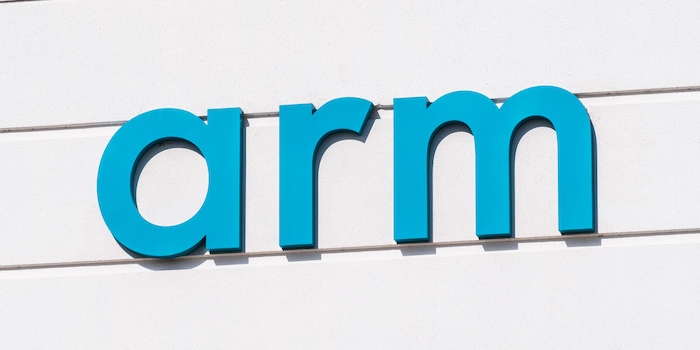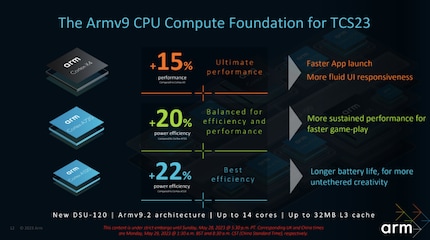
ARM lays the foundations for the next generation of smartphone processors
15 per cent more performance and 40 per cent less power consumption: ARM has presented the architectures of the computing cores for the next generation of smartphone processors.
At Computex 2023, ARM presented new designs for three computing cores and three graphics units. Chip manufacturers will be able to use them for their products in future and continue the trend towards increasing performance with decreasing power consumption. The new high-performance Cortex-A4 computing core is said to require almost half as much energy as its predecessor.
More power, higher efficiency
ARM does not manufacture any system-on-a-chip (SoC) or processors itself. However, the company supplies the design for the computing core architecture, which other manufacturers can in turn adopt. In the smartphone sector, for example, Mediatek and Qualcomm use the predecessors of the new products in their current top processors Dimensity 9200 and Snapdragon 8 Gen 2.
The Cortex-X4 is the new high-performance computing core. Compared to the Cortex-X3, it is said to offer 15 per cent more performance and still consume 40 per cent less energy. The Cortex-A720 is intended for "medium-duty" tasks. It is said to offer 20 per cent more performance than its predecessor. The Cortex-A520 is intended for tasks that run in the background. Its focus is on efficiency, which is said to have increased by 22 per cent compared to the A510.

Source: ARM
The manufacturers themselves decide in which combination the computing cores are placed on their SoCs. In future, even more variations will be available to them. The new ARM architectures support up to 14 computing cores - previously there were twelve. For comparison: the current top chips Snapdragon 8 Gen 2 and the Dimensity 9200 each have eight computing cores.
Graphics also further optimised
ARM has also introduced new architectures for the graphics calculation of the SoCs. The Immortalis-G720, Mali-G720 and Mali-G620 GPUs are also designed to offer more performance with less power consumption. ARM claims 15 per cent more computing power and 15 per cent less energy consumption for the Immortalis, for example, compared to its predecessor. The required memory bandwidth is said to be reduced by up to 40 per cent. Although this provides slightly better performance, it primarily reduces power consumption, as memory accesses are energy-intensive.
The biggest improvement is the "Deferred Vertex Shading" or DVS for short. It is intended to calculate the positions, colours and overlaps of objects and, if the next shading calculation is not part of this, save the data in a new buffer. The data is then not read from the graphics memory again, but loaded directly from the buffer.
No information on customers yet
ARM has not yet provided any information on potential customers using the new core designs. However, the best-known users of ARM architectures in the mobile sector to date, Qualcomm and Mediatek, are likely to remain on board. The advertised 15 per cent more performance and 40 per cent less power consumption could be found in the Snapdragon 8 Gen 3 and the Dimensity 9300 when they are unveiled at the end of this year as expected.
Apple also uses ARM designs for its in-house SoCs, but has not yet switched to the latest ARMv9 architecture. If this happens with the iPhone 15 and the Apple A17 Bionic, it could be a big leap compared to the A16 Bionic in the iPhone 14.
However, Apple already made the switch to 64-bit for its systems in 2017 with iOS 11. In contrast, 32-bit has not yet completely disappeared from Android hardware and software. However, the new core designs from ARM could drive this process forward.
Cover photo: Sundry Photography / Shutterstock.com
When I was but a young student, I'd sit in my friend's living room with all my classmates and play on his SuperNES. Since then I've had the opportunity to test out all the newest technology for you. I've done reviews at Curved, Computer Bild and Netzwelt, and have now arrived at Galaxus.de.
From the latest iPhone to the return of 80s fashion. The editorial team will help you make sense of it all.
Show all